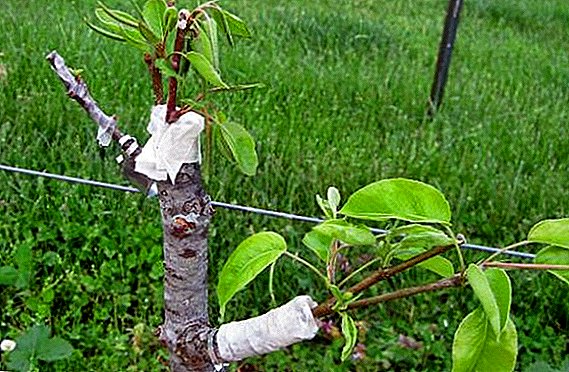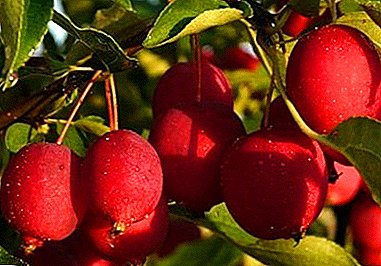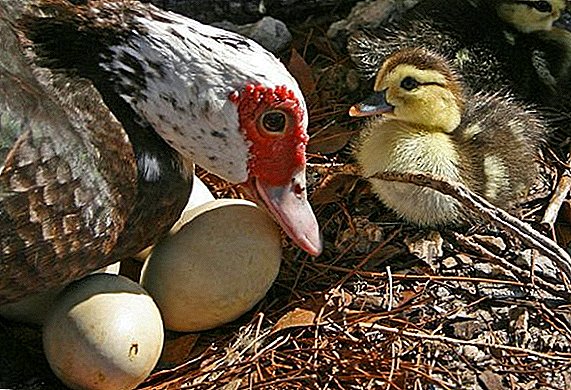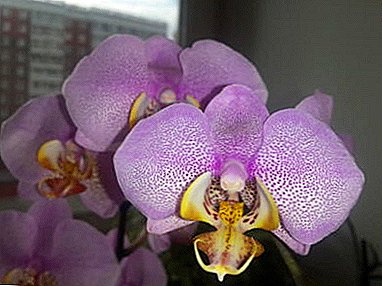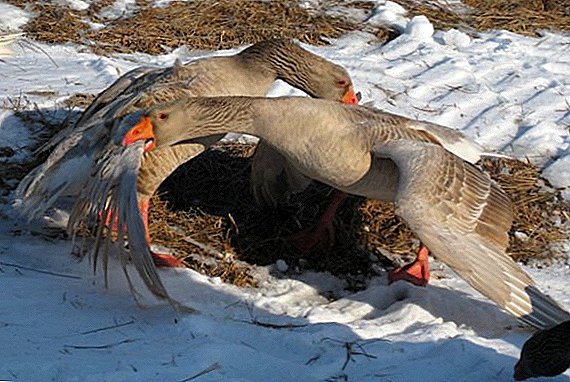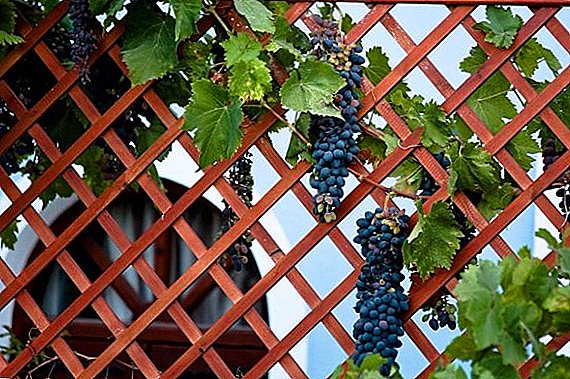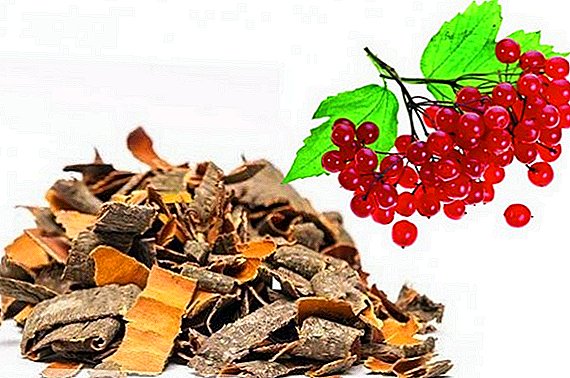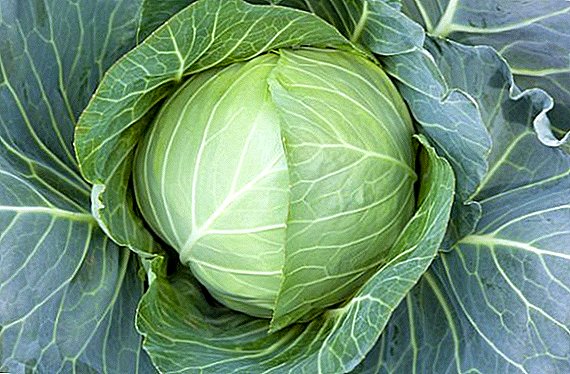 Cabbage is one of the most popular crops. Many of its varieties are known, today we will talk about the variety Podarok, long known in our region.
Cabbage is one of the most popular crops. Many of its varieties are known, today we will talk about the variety Podarok, long known in our region.
Description and characteristics
The gift is a mid-season variety of white cabbage. For the first time the variety was described in the registry in 1961, allowed for commercial cultivation. Crop harvested from the last decade of August to mid-September. Ripening occurs after 4-4.5 months after germination.
This variety is suitable for both fresh consumption and for fermentation. The weight of the head can reach 5 kg, and the socket in diameter of about one meter. Rosette leaves sprawling, slightly raised, corrugated at the edges, have a waxy coating.  Heads of mostly round shape, sometimes slightly flattened, very juicy and dense. Inner leaves have a yellowish tint, outer grayish-green.
Heads of mostly round shape, sometimes slightly flattened, very juicy and dense. Inner leaves have a yellowish tint, outer grayish-green.
Did you know? The composition of cabbage of this variety is about 25-40 mg of vitamin C per 100 g of product, 4.7-6.2% of sugar.
It has high rates of keeping quality - under the right conditions, it can be stored for up to 7 months.
The advantages and disadvantages of the variety
From the description of the variety of cabbage Gift go to its poles and minuses. This variety has many advantages:
- good growth and yield even in adverse climatic conditions;
- disease resistance;
- long shelf life;
- transportability;
- cold resistance;
- excellent taste;
- heads of cabbage do not crack.

Planting and breeding cabbage
To obtain a good harvest, it is important to grow high-quality and strong seedlings.
Seed selection
Seeds are best purchased from verified sellers in the original packaging. So the risk to purchase a completely different variety will be minimal. Before sowing, they should be soaked in a weak solution of potassium permanganate. Floated seeds are unsuitable for planting.
Did you know? The benefit of sauerkraut is much higher than fresh. Its useful qualities can be maintained for 10 months.

Terms and plan of sowing
Seeds are sown in soil mixture at the end of April. For this, a substrate of 75% peat, 20% sod land and 5% sand is suitable. The soil is poured into the tank and watered with an antifungal drug, only a couple of days later, they begin sowing seeds.
Seeds are planted at a distance of 5 cm from each other, drowning them 1.5 cm in depth. The first shoots will appear in 7 days.
Seedling care
Immediately after sowing, the tank is installed on windows with good lighting, the temperature is maintained not lower than 18ºС. After sprouting the seedlings, the temperature is reduced to 15 ° C and transferred to a slightly shaded place. Thus, the hardening of seedlings occurs.
In case of cloudy weather, it is necessary to provide additional lighting in the form of lamps.
Planting cabbage in open ground
Transplanted seedlings in open ground at the end of May, when about 5 true leaves appear on it. It is necessary to choose a sunny plot without trees, from autumn it is necessary to dig and fertilize with humus and manure, as well as phosphorus-potassium fertilizers. In the spring before planting make nitrogen fertilizer. Seedlings are planted at a distance of about half a meter from each other, leaving a gap of up to 70 cm between the rows. After disembarking, the well is plentifully watered and tamped.
Important! Cloudy weather or evening time is best for landing.
Grade Care
To get a good harvest, it is important to follow the rules of watering and feeding.
Watering
In case of drought, it is necessary to water up to two times a week. Immediately after transplanting, about 2 liters of water are required; when the head starts to form, the amount of water is increased to 3-4 liters.
Top dressing
An important factor in the cultivation of cabbage is dressing. Fertilizers are applied immediately after watering or at the end of prolonged precipitation. During the season feeding is made three times: The first fertilization is carried out two weeks after transplanting seedlings into the ground. Manure or urea is used here.  The second time fertilizers are applied three weeks after the first. The composition of the feed should include superphosphate, potassium and ammonium sulphate. If the soil is highly depleted and the third dressing is carried out, it is identical in composition to the second one.
The second time fertilizers are applied three weeks after the first. The composition of the feed should include superphosphate, potassium and ammonium sulphate. If the soil is highly depleted and the third dressing is carried out, it is identical in composition to the second one.
Loosening and hilling
Cabbage should be regularly spud for unobstructed air access to the roots. The first time it is carried out immediately after diving seedlings, then repeated after three weeks. From time to time, the soil must be weeded to remove weeds.
Possible diseases and pests
This variety of cabbage is practically not subject to diseases. Nevertheless, there is always a risk of being affected by both pests and viral diseases.
To further minimize this risk, it is necessary to disinfect the seeds before planting, remove weeds that can be a source of infection, promptly remove the affected plants and cultivate the soil, and also fight against parasites.  Of the pests are most common cabbage fleas and aphids, sacral flea. To combat them, the insecticides Iskra, Karate, Karbofos, Chlorofos, Aktara are used.
Of the pests are most common cabbage fleas and aphids, sacral flea. To combat them, the insecticides Iskra, Karate, Karbofos, Chlorofos, Aktara are used.
Harvesting
The time of harvesting is determined mainly by feeling the head of the head; if it is sufficiently hard and has reached the size inherent to the variety, it is possible to start harvesting.
Important! When growth stops, the lower leaves begin to turn yellow.
The gift belongs to the mid-range varieties and the crop is harvested at the end of summer or early autumn. As we see, cabbage Gift possesses a rich set of positive characteristics and deserves cultivation on your site. 


